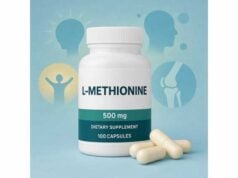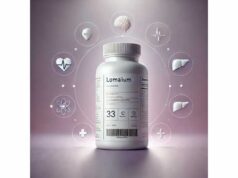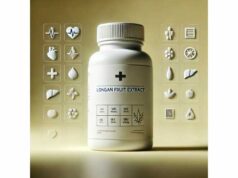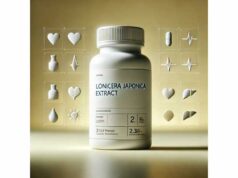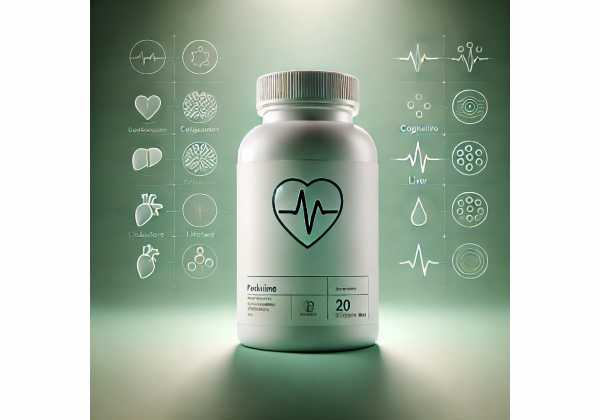
L-valine is one of the three branched-chain amino acids (BCAAs), alongside leucine and isoleucine. As an essential amino acid, your body cannot make it; you must get it from food or supplements. In muscle, valine is used directly as fuel during exercise and serves as a building block for new proteins. In the brain, it competes with tryptophan and other large neutral amino acids for transport, which helps explain its effects on perceived fatigue. Clinicians have also used BCAA-enriched formulas—including valine—to support people with liver disease and protein-energy deficits. This guide takes a practical, people-first approach: what valine does, where it fits, how to take it, how to avoid mistakes, and what the evidence actually says.
Key Insights
- Supports muscle protein balance and endurance during prolonged exercise.
- May reduce perceived fatigue via central mechanisms; clinical use in certain liver conditions.
- Typical supplemental range: 2–5 g L-valine per day on its own, or 5–10 g BCAAs (2:1:1) delivering ~2.5–3.3 g valine around training.
- Avoid high-dose BCAAs if you have advanced kidney or liver disease unless supervised.
- People with maple syrup urine disease, pregnancy/breastfeeding, or on complex drug regimens should use medical guidance.
Table of Contents
- What is L-valine and how it works
- What benefits can you expect?
- How to use L-valine day to day
- Dosage and timing: how much and when?
- Safety, interactions, and who should avoid it
- Evidence at a glance: where valine stands
What is L-valine and how it works
The basics
L-valine is an essential amino acid with a branched side chain. Along with leucine and isoleucine, it makes up a large share of the amino acids in skeletal muscle. Because it is essential, the only sources are diet (meat, fish, eggs, dairy, legumes, soy, lupin, quinoa) and supplements (valine alone or BCAA mixes).
Unique to BCAAs
Unlike most amino acids that are first metabolized in the liver, BCAAs—including valine—are metabolized largely in muscle. During prolonged or intense exercise, muscle cells oxidize valine to help meet energy demands, sparing other amino acids and contributing carbon skeletons to the TCA cycle.
Mechanisms that matter to you
- Protein turnover balance: Valine participates in muscle protein synthesis and reduces net breakdown when adequate total protein and energy are present. It does not stimulate synthesis as strongly as leucine, but it supports the overall anabolic environment when taken with complete protein.
- Central fatigue hypothesis: Valine competes with tryptophan for transport across the blood-brain barrier via the LAT1 transporter. By reducing brain uptake of tryptophan (a serotonin precursor), valine may blunt the rise in central fatigue signals during extended exercise, helping you sustain pace and focus.
- Glucose and energy regulation: During endurance work, valine oxidation provides energy substrates. In mixed meals, valine contributes to gluconeogenesis and overall nitrogen balance—relevant in recovery and in catabolic states.
- Clinical nutrition: In cirrhosis and hepatic encephalopathy, BCAA-enriched formulas (balanced mixes of leucine, isoleucine, and valine) can improve nitrogen balance and support neurologic function by shifting amino acid ratios.
Forms you will see
- L-valine (free form): Standalone powder or capsules for targeted stacking.
- BCAA blends (commonly 2:1:1): The most studied pattern; e.g., 2 parts leucine, 1 part isoleucine, 1 part valine. Other ratios (4:1:1, 8:1:1) exist but have less balanced valine content.
- Complete proteins: Whey, casein, soy isolate, and blends naturally provide all essential amino acids, including valine, and are usually the most efficient way to meet needs.
What benefits can you expect?
1) Endurance and perceived fatigue
In long sessions (running, cycling, team sports), brain serotonin typically rises, contributing to a sense of central fatigue. Valine competes with tryptophan, potentially attenuating that rise. Athletes often report steadier focus and pacing when using a balanced BCAA drink during efforts lasting longer than 60–90 minutes. The effect is modest and works best when carbohydrates and fluids are also optimized. Think of valine as a “fatigue buffer” that works with—not instead of—fueling and hydration.
2) Recovery and soreness
BCAAs can reduce markers of muscle damage and delayed onset muscle soreness in some protocols, particularly when dietary protein is marginal or when training is novel or eccentric-heavy. Valine’s role here is supportive: it contributes to total essential amino acid availability, which may reduce net breakdown post-exercise when paired with leucine and a full amino acid profile. If your daily protein intake is already robust (for example, 1.6–2.2 g/kg/day from complete sources), the added benefit from standalone BCAA/valine is smaller.
3) Lean mass preservation in calorie deficits
During cutting phases or weight-class sports, adequate essential amino acids are key to preserving muscle. BCAAs (with valine) can help bridge small protein gaps when appetite is low or when sessions stack up. Still, a complete protein (whey, casein, soy) generally outperforms BCAAs for muscle retention because it provides all essential amino acids in effective ratios.
4) Clinical and special settings
BCAA-enriched formulas are used in medical nutrition therapy for people with chronic liver disease, sarcopenia, or poor appetite to improve nitrogen balance and functional outcomes. In these settings, valine is part of an evidence-based balanced BCAA mixture, not used alone, and the approach should be supervised by a clinician or dietitian.
5) Cognitive steadiness under prolonged effort
Some users describe clearer mental effort during very long workouts, tournaments, or shift work when sipping a BCAA solution. Mechanistically, this aligns with valine’s effect on large neutral amino acid transport and neurotransmitter balance. The benefit is situational and depends on adequate carbohydrates, electrolytes, and sleep.
Realistic expectations
- If you train occasionally and already hit daily protein targets, BCAAs/valine are optional.
- If you train hard and often, diet is inconsistent, or sessions are >90 minutes, a BCAA drink (providing ~2.5–3.3 g valine) can be practical support for fatigue and soreness.
- In medical contexts (e.g., hepatic encephalopathy), valine belongs in a clinician-directed BCAA plan, not self-supplementation.
How to use L-valine day to day
Choose the right vehicle
- Start with food first. Aim for 1.2–2.0 g protein/kg/day depending on training load and goals. Whole foods and complete protein supplements cover valine needs efficiently.
- Add valine or BCAAs to fill timing gaps. If you train fasted early morning or go several hours between meals, a BCAA mix can plug the gap pre/intra-workout.
- Standalone L-valine: Useful if you are fine-tuning a formula (for example, adding valine to a leucine-heavy blend to restore balance), or if you are testing central-fatigue effects with minimal calories before endurance work.
Stack examples
- Intra-endurance (90+ minutes): 600–900 ml fluid per hour with electrolytes and 30–60 g carbs, plus 5–8 g BCAAs (2:1:1) per hour (delivers ~2.5–4 g valine).
- Strength session when breakfast was light: 5 g BCAAs 20–30 minutes pre-lift, then a complete protein meal or shake (20–40 g) post-lift.
- Cutting phase, appetite low: 5–10 g BCAAs between meals to reduce breakdown, but still prioritize total daily protein.
Taste and tolerance tips
- BCAAs can be bitter. Use flavored powders or mix with citrus, cold water, or a small splash of juice.
- If you experience nausea, reduce dose per serving, sip rather than chug, and avoid highly concentrated mixes.
When not to over-engineer
- If you can consistently consume complete protein at regular intervals, extra valine is rarely necessary outside of very long endurance or special clinical needs.
- Beware of stacking multiple “amino boosters”—they can crowd out real meals and lead to overall nutrient gaps.
Dosage and timing: how much and when?
From diet and daily requirement
- Adults typically require ~20–30 mg valine/kg/day from total protein intake. For a 70-kg adult, that’s ~1.4–2.1 g/day of valine embedded within normal protein foods. Hitting 1.6–2.2 g/kg/day total protein usually covers this without effort.
Supplemental ranges
- Standalone L-valine (aggressive fine-tuning): 2–5 g/day, divided doses, with or around training.
- BCAA blends (2:1:1): 5–10 g per serving, 1–2 times daily around training. This delivers ~2.5–5 g leucine and ~2.5–5 g combined iso/leu with ~2.5–3.3 g valine per 10 g BCAA.
- Endurance intra-session: 2–4 g valine per hour is typical when using BCAA drinks during very long efforts, paired with carbs and electrolytes.
Timing made simple
- Pre-workout (strength or endurance): 5 g BCAAs 20–40 minutes before if your last meal was >3 hours ago.
- Intra-workout (long endurance): Sip 5–8 g BCAAs per hour with fluids and carbs.
- Post-workout: Prefer complete protein (20–40 g) to maximize repair; BCAAs add little here unless your meal is delayed.
Who should use the low end vs. high end?
- Low end (2–3 g valine/day; 5 g BCAAs): Smaller body size, lighter training volume, or strong baseline protein intake.
- High end (4–6 g valine/day; 8–10 g BCAAs): Larger athletes, heavy training blocks, fasted or two-a-day sessions, or during cuts when meals are sparse.
How long until you notice anything?
- Perceived fatigue: Within the first few long sessions when dosed pre/intra-workout.
- Soreness/recovery: Look for trends over 1–2 weeks of consistent use, especially during novel or high-eccentric training.
Safety, interactions, and who should avoid it
Common side effects
Most people tolerate valine and BCAA powders well. The most frequent complaints are bitter taste, mild nausea, or bloating when mixes are too concentrated or taken on an empty stomach. Diluting in more water and splitting doses typically solves this.
Interactions and cautions
- Chronic kidney or significant liver disease: High free-amino loads can be problematic. Use only under medical supervision and favor clinician-directed medical nutrition formulas over self-supplementation.
- Maple syrup urine disease (MSUD): A rare inherited disorder of BCAA metabolism—avoid unsupervised BCAA/valine use.
- Diabetes or insulin resistance: Very high BCAA intakes have been associated with altered metabolic signaling in observational research. Keep doses moderate, prioritize whole-food proteins, and focus on overall dietary quality.
- Medications affecting CNS or serotonin: Because valine can influence large neutral amino acid transport, people on medications with central serotonergic effects should introduce valine/BCAAs cautiously and discuss with a clinician if concerned.
Pregnancy, breastfeeding, and youth
- As part of dietary protein, valine is essential at all life stages. However, high-dose free-form BCAAs or standalone valine lack robust safety data in pregnancy/breastfeeding—stick to food-based protein or clinician-advised formulas. For adolescents, use food-first strategies unless a sports dietitian recommends otherwise.
Smart use principles
- Meet total protein needs first.
- Use valine/BCAAs as a situational tool, not a meal replacement.
- Reassess every 4–8 weeks; if you see no practical benefit, discontinue.
Evidence at a glance: where valine stands
Endurance and fatigue
Trials using BCAA drinks during prolonged exercise report reductions in perceived exertion and mental fatigue in some but not all settings. Benefits are more likely when sessions exceed 60–90 minutes and when carbohydrate intake is optimal. Mechanistic support comes from valine’s competition with tryptophan for brain transport, aligning with the central fatigue hypothesis.
Muscle damage and soreness
Systematic reviews suggest BCAAs can modestly reduce markers of muscle damage and soreness, especially when baseline protein intake is suboptimal or when training emphasizes eccentric loading. The effect size diminishes when daily protein is already high and evenly distributed.
Body composition and strength
For increasing muscle mass and strength, complete proteins outperform BCAAs or valine alone, because full sets of essential amino acids—especially sufficient leucine—are required to drive maximal muscle-protein synthesis. BCAAs/valine are best viewed as adjuncts around training, not core builders.
Clinical nutrition
In cirrhosis and hepatic encephalopathy, BCAA-enriched formulas are commonly used to improve nitrogen balance and quality of life metrics, with evidence supporting benefits on minimal encephalopathy and some functional outcomes. These protocols use balanced BCAA mixtures, not valine monotherapy, and should be overseen by clinicians.
Metabolic health
Elevated fasting BCAA levels correlate with insulin resistance in epidemiologic studies. Causality is complex: excess intake, impaired catabolism, and overall diet quality all play roles. For healthy, active people using moderate doses within a balanced diet, current evidence does not show harm; nonetheless, more long-term randomized trials are needed.
Bottom line
Use L-valine within a balanced BCAA approach when sessions are long or meals are mistimed. For hypertrophy and strength, focus on total protein and whole foods; see valine as a tactical helper rather than a centerpiece. In medical settings, defer to clinician-guided BCAA therapy.
References
- Protein and Amino Acid Requirements in Human Nutrition: Report of a Joint WHO/FAO/UNU Expert Consultation 2007 (Guideline)
- Branched-chain amino acids in disease 2022 (Systematic Review)
- Branched-chain amino acids for people with hepatic encephalopathy 2018 (Systematic Review)
- Effects of branched-chain amino acid supplementation on exercise-induced muscle damage: a systematic review and meta-analysis 2021 (Systematic Review)
- Effects of branched-chain amino acid supplementation in patients with liver cirrhosis: a systematic review and meta-analysis 2020 (Systematic Review)
Disclaimer
This article is for educational purposes and does not replace personalized medical advice. Talk with a qualified health professional before starting, stopping, or combining supplements—especially if you are pregnant or breastfeeding, have kidney or liver disease, diabetes, or take prescription medications. If you experience unexpected symptoms after using amino acid supplements, stop and seek medical care.
If this guide helped you, please consider sharing it on Facebook, X (formerly Twitter), or your preferred platform, and follow us for more evidence-based nutrition resources. Your support helps us keep producing clear, trustworthy content.

